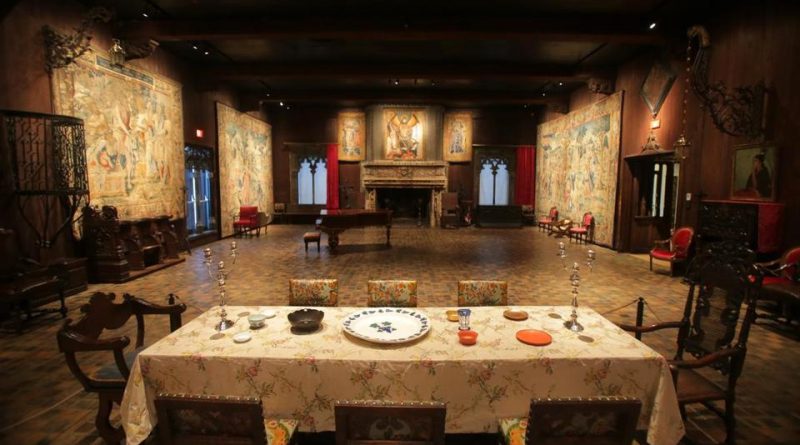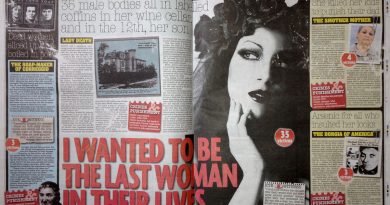The Gardner Heist: Story of the World’s Largest Unsolved Art Theft
Source : http://bostoncommon-magazine.com
Shortly after midnight on March 18, 1990, two men broke into the Isabella Stewart Gardner Museum in Boston and committed the largest art heist in history. They stole a dozen masterpieces, including one Vermeer, three Rembrandts, and five Degas. But after thousands of leadsand a $5 million rewardnone of the paintings have been recovered. Worth as much as $500 million, the missing masterpieces have become one of the nation’s most extraordinary unsolved mysteries.
On the night of St. Patricks Day, two police officers entered Bostons Isabella Stewart Gardner Museum. They were responding to a call, they said, and so, the security guard let them in. Minutes later, both guards on duty that evening were handcuffed, brought to the museums basement, tied to pipes, and immobilized.
By the time their morning relief came, 13 paintings, valued at approximately $300 million, had been cut from their frames: several Rembrandts; Degas; a Manet; a Vermeer.
The policemen had been thieves in disguise. The guard had broken protocol to allow them entrance in the first place. The entire crime took 81 minutes. None of the art has ever been recovered and, despite an apparent break in 2008, 22 years after the heist not a single person has been charged. 13 frames hang empty, as a reminder of the loss.
After 20 yearsand thousands of leadsinvestigators might finally be on the brink of solving the largest art theft in history.
The wee hours of March 18, 1990, were good ones for a robbery. Most of Boston was still out celebrating Saint Patricks Day with boozy cheer. A light rain had fallen earlier in the day. The streets of the Fenway were wet and slick. Shortly after midnight, two thieves dressed as police officers approached the Palace Road side entrance of the Isabella Stewart Gardner Museum.
The institution is one of New Englands most beautifully romantic spots, a treasure palace brimming with masterpieces by Botticelli, Velázquez and Rubens. Through an intercom, the thieves told the night guards they were investigating a disturbance. The fake cops were buzzed into the building, and they quickly thrust the security guards against a wall.
This is a robbery, one of the thieves said. Dont give us any problems, and you wont get hurt. Dont worry, a guard muttered, they dont pay me enough to get hurt. The crooks wrapped strip after strip of duct tape around the eyes and mouths of the guards, swaddling their heads until they looked like mummies.
They brought the guards into the basement of the museum and handcuffed one to a pipe and the other to a workbench. The thieves then strode through the galleries. They owned the museum for the night, and they looted the galleries for over an hour, stealing more than a dozen artworks including one Vermeer, three Rembrandts and five Degas. It was the largest art heist in history and the biggest burglary in American memory. Today, experts believe that the stolen paintings are worth as much as $500 million.
It has been more than two decades since the Gardner theft, and despite dozens of investigators, thousands of leads and a $5 million reward, not a single artwork has been recovered, not a single arrest made. But over the past few years, it appears that the caper might finally be breaking open, and new evidence about the crime has been making headlines around the country. Or as Anthony Amore, the museums current director of security, told me recently: I have no doubt that the art will again be displayed.
The Gardner theft has long inspired obsession. Some art hunters want the $5 million reward, one of the largest ever offered by a private institution. Some are fascinated by the lost pieces, and novels, movies, poems, drawings and paintings have all been dedicated to the caper. Think of how bored they get, stacked in the warehouse somewhere, say in Mattapan, gazing at the back of the butcher paper they are wrapped in, instead of at the rapt, glad faces of those who love art, wrote novelist John Updike of the stolen paintings.
Indeed, the thieves who robbed the Gardner Museum knew so little about art that they cut two of the Rembrandts out of their frames. Museums like the Gardner also suffer from a security Catch-22: If they make it easy for the public to experience great art, they also make it easier for crooks to steal it, and when institutions dont provide an intimate, nose-to-the-canvas environment, visitors complain. When crooks pilfered Edvard Munchs masterwork The Scream from a Norwegian museum, they left behind a note that said simply Thanks for the poor security. Oslos Munch Museum then turned their institution into an art-world Fort Knox, with metal detectors and an X-ray machine. The press dubbed the building Fortress Munch, and art lovers grumbled, saying that they couldnt appreciate the masterpieces because of the thick, protective glass.
The Gardner continues to believe that its paintings will soon be returned, and new evidence has surfaced implicating Boston gangster David Turner. Hailed by local newspapers as the Teflon gangster of the South Shore, Turner might be one of the most infamous criminals ever to come out of Boston. Investigators believe that he helped run a million-dollar cocaine ring, that he was behind a half dozen murders and that he robbed the Bull and Finch pub on Beacon Street, which was the inspiration for the TV show Cheers.
The evidence against Turner is significant, and FBI files describe how Turners crime boss, Carmello Merlino, tried to offer information about the paintings in exchange for a reduced prison sentence shortly after being picked up for a drug charge in 1992. The last witness to see the thieves before they entered the museum described one of the thieves as having Asian eyes, and Turner fits that description.
When Turner was recently confronted with evidence of his potential role in the caper, he denied having anything to do with the theft, but then he began to brag, telling a reporter that his face should be on the cover of a book about the heist. The evidence against Turner and his underworld crew continues to mount. Last March, for instance, Richard Reissfelder, a retired National Guard military policeman, came forward, saying that he recalled eyeing one of the lost Gardner paintings in the apartment of his brother George.
When I see [the canvas] I have the same reaction every time. Ive seen it. Ive seen the painting, Reissfelder told reporters from the Boston Herald. George Reissfelder had run with David Turners underworld crew. He also looks jaw-droppingly similar to one of the sketches of the robbers made after the heist, and a confidential informant once told the FBI that George Reissfelder was one of the thieves. The Gardner Museums director of security, Anthony Amore, helped develop the Reissfelder lead by reaching out to the family. I dont know if Richard Reissfelder saw our Manet, but I do believe that he believed he saw our Manet, Amore told me recently.
But George Reissfelder died of a drug overdose a year after the theft, and it seems clear that Turner doesnt have access to the lost art; hes in prison until 2032 for armed robbery, and he has never been charged with the museum theft. But if one were to speculateand this is definitely raw speculationit seems likely that the thieves stashed the paintings in a safe house somewhere outside of Boston, in an attic or under a bed, and the person who took control of the paintings died or was killed.
The situation is complicated by the fact that Turner appears to have killed many of those who participated in the robbery. A government informant once claimed that Lenny DiMuzio was involved in the heist. He was shot to deathhis body found under a bridge in East Bostonand law enforcement believes Turner was the triggerman.
FBI files also indicate that Charlie Pappas may have been one of the thieves. He turned states evidence against Turner, and he was shot a few days before he was supposed to testify against him. Again police believe that Turner was behind that murder. The evidence doesnt close the casefar from it. What really matters is the return of the paintings, and investigators from Anthony Amore to federal law enforcement continue to hunt for the lost pieces. Earlier this year, for instance, the FBI posted billboards of images of Rembrandts The Storm on the Sea of Galilee along Interstate 93 and Interstate 495 along with a toll-free number soliciting leads, and when the new head of the Boston FBI office, Richard DesLauriers, recently announced his top investigative priorities, he listed the return of the Gardner paintings among them.
To be sure, when thieves steal art, it rarely comes back. Some estimates of recovery rates are as low as five percent, and the rates for well-known paintings like the Gardner masterpieces tend to be even lower because the works are nearly impossible to sell on the open market. It often takes years, decades, even centuries, for top-flight works to be returned.
In the 1860s, Union Army soldiers stole North Carolinas Bill of Rights out of the state capitol, and the artifact remained missing for 140 years. Then, in 2003, two antiques dealers tried to peddle the work for $4 millionand the FBI picked it up in a sting. But whatever happens, the caper will not soon be forgotten. Boston heiress Isabella Stewart Gardner stipulated in her will that nothing in the galleries should ever be changed, and today the empty frames still hang on the walls from the night of the robbery. The frames look sad, lifeless and tragic. But theyre also dreamingdreaming of the masterpieces coming home. Or as Anne Hawley, the Gardner Museums director, says, quoting Emily Dickinson: I live in hope. I dwell in possibility.
Read more at Boston Common
Discuss article |
Article Link



